|
|
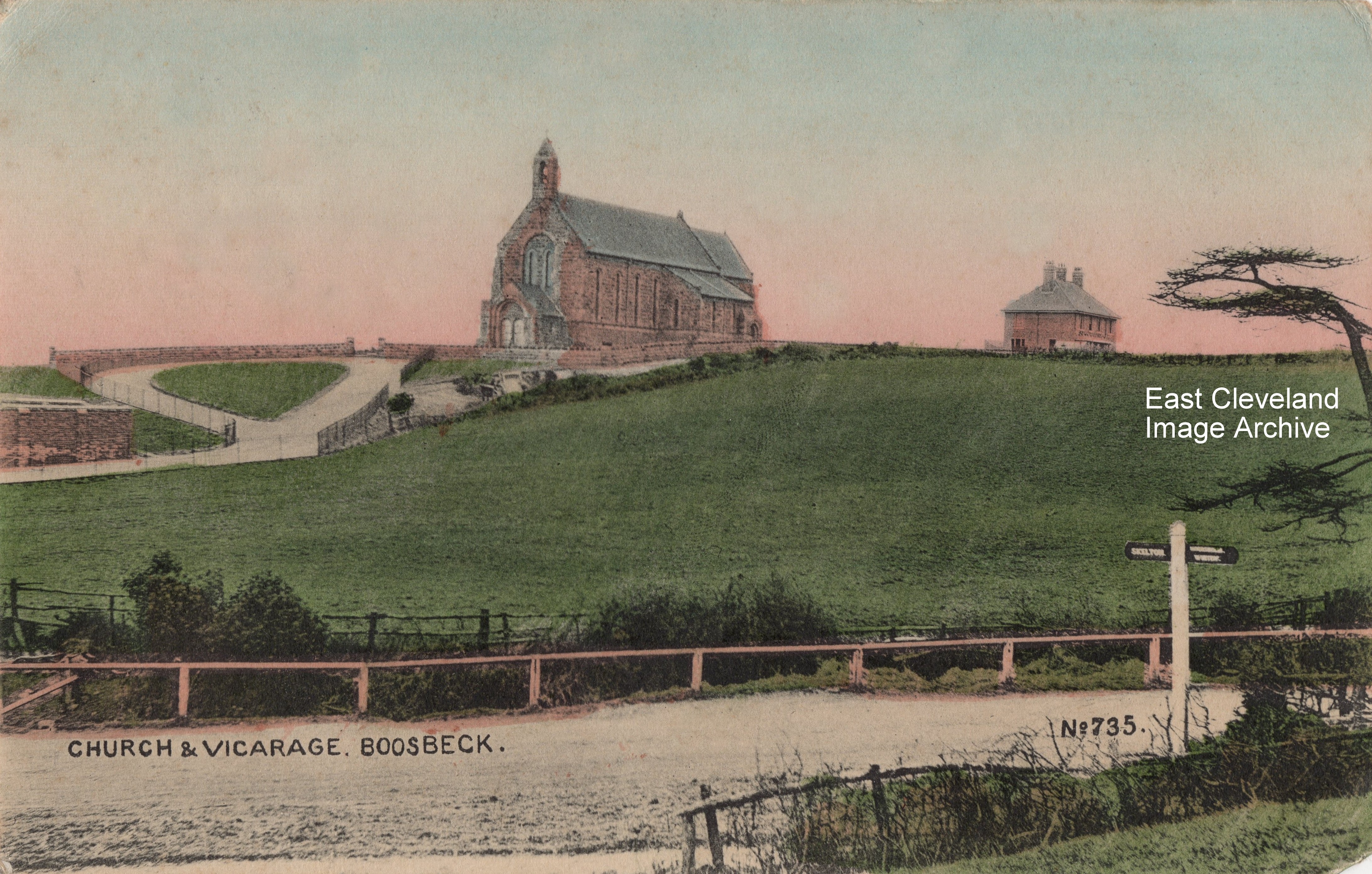
This hand-tinted postcard from the Phoenix Series showing St Aidan’s church, Boosbeck (and the vicarage beyond) can be dated to post 1904; researches provide the following description: St Aidan’s Church is a cruciform building of stone in the Norman style, erected in 1900; from designs by Messrs. Hicks and Charlwood, architects, at a cost of £4,000 and consists of a chancel, nave, transepts, west porch and a turret containing one bell: there being seating for 410. The site for the church and church yard was given by W.H.A. Wharton esq. of Skelton Castle, and the site for the vicarage by the late R.P. Petch esq., the vicarage house was erected in 1904, at a cost of £1,900. The separate ecclesiastical parish of Boosbeck was formed 13th December, 1901, the church was consecrated 29th October 1901; today the parish of Boosbeck retains the church which with Lingdale is part of the parish of Skelton.
Image courtesy of Julie Tyrka.
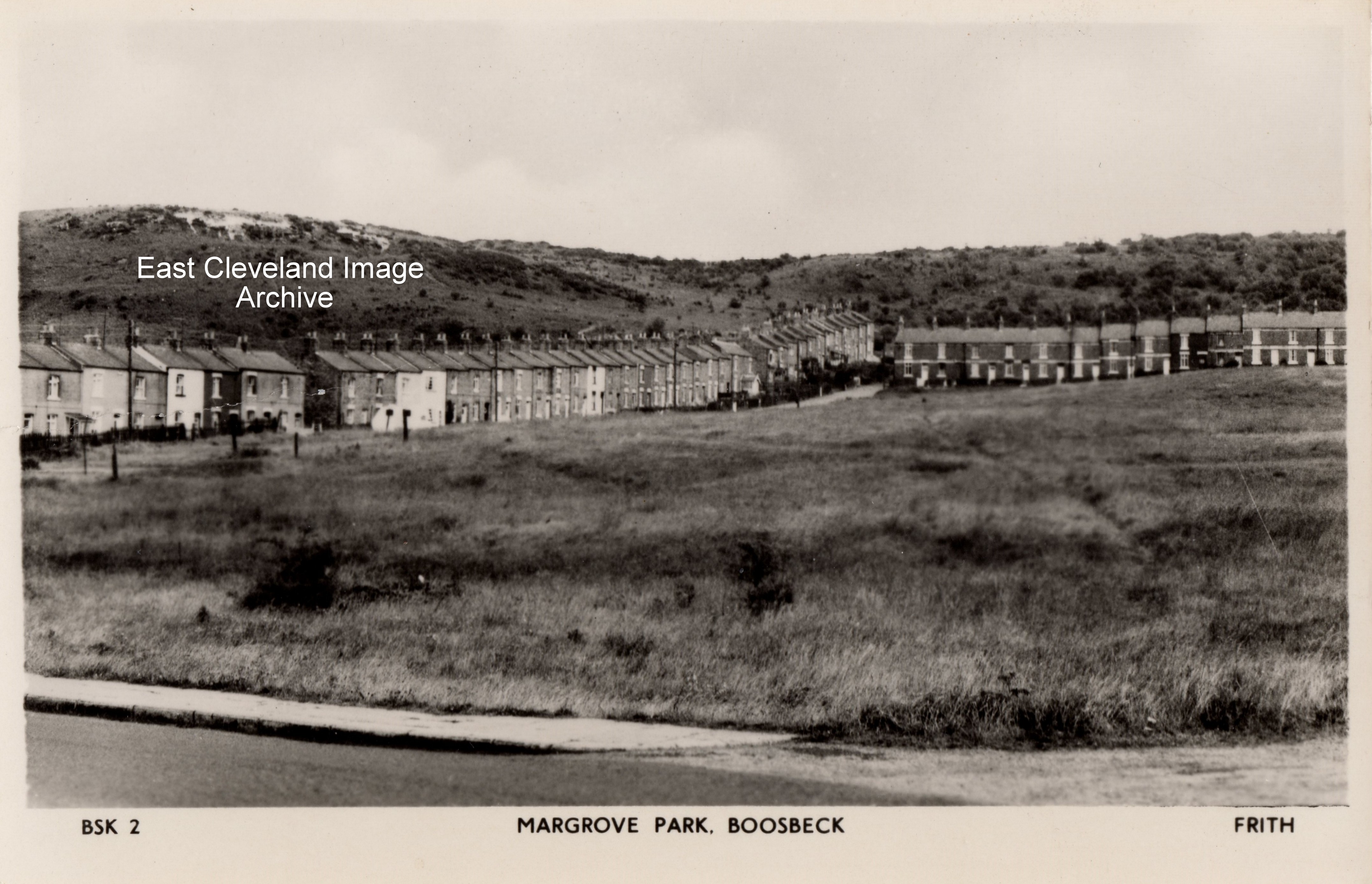
More familiarly known as “Magra” this Frith postcard is believed to date from the 1950s and is the best image as yet available to the Archive. This small community developed as a result of South Skelton ironstone mine being built in the 1850s and originally consisted of the two terraces of houses forming an L-shape on the hillside; between 1928 and 1933 Margrove and other local communities was closely linked to the Heartbreak Hill initiative by the Pennyman family of Ormesby Hall. The aim being to assist the residents whose lives had been devastated during the Depression; more recently this believed good works may have been had links to Nazi ideals and is still open for debate.
Image courtesy of Julie Tyrka.
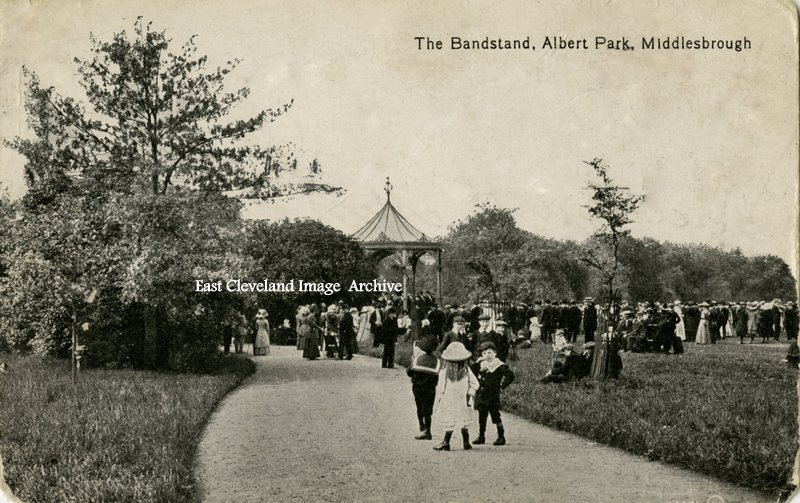
An obviously popular concert being held at the Albert Park Bandstand c.1905, judging by the crowds surrounding the Bandstand. Perhaps the three young people in the foreground where perhaps not as interested?
Image courtesy of Iris Place.
A Banbride postcard view of the floods at North Ormesby railway crossing with the Toll Bar cabin in the background. The horse must have been quiet, imagine having the confidence to stand on the trailer?
Image courtesy of John G. Hannah.
Do you remember North Ormesby Hospital? North Ormesby Hospital was built and opened in 1861 and over the years expanded into a hotch-potch of buildings that served the community for 120 years. North Ormesby Hospital closed in 1981 and was demolished in March 1982. This Standard Series postcard view is post marked 22nd January 1906. Ann Jackson tells us: ”I worked at North Ormesby Hospital from 1966 till 1975 . It was my training base for nursing. Miss Ferguson was the Matron. It was a very friendly hospital. We had a reunion recently at the Baltimore Hotel on Marton Road.” Anne Norman (nee Compitus) adds: “It was also my training hospital 1977 to closure in 1981.It was a lovely friendly place.Worked on Private and Recovery ward.”
Image courtesy of John G. Hannah and many thanks to Ann Jackson and Anne Norman for the updates.
An hand coloured postcard of Ruswarp, looking towards Whitby side. The old road bridge was replaced by the present arch bridge in 1936. The church of St Bartholomew prominent in the photo and the station to the right of the road level crossing.
Image courtesy of a friend of the ECIA.
Situated in close proximity to the Cleveland Tontine; Ingleby Arncliffe merges into the neighbouring village of Ingleby Cross. Close by is Mount Grace which was purchased by the Middlesbrough Teesside steel magnate Sir Isaac Lowthian Bell as a weekend retreat in the 19th century.
Image courtesy of Ann Wedgewood and Keith Bowers.
‘Over the Border’ as it is colloquially known or St Hilda’s in Middlesbrough; housed the then thriving weekly market in 1905. Another area vastly different today.
Image courtesy of Ann Wedgewood and Keith Bowers.
This St Alban’s Series postcard of Newport Bridge is possibly mid 20th Century, The bridge was opened by the Duke and Duchess of York (King George VI & Queen Elizabeth) on 28th of February 1934; part of a tour the Duke and Duchess made to the area, including a visit to Margrove Park (Heart Break Hiil) and Loftus. The bridge was last raised in November 1990. Mark T. tells us: ”The last lift is featured on ‘youtube’ .” However Russ Pigott informs us: ”This cannot be the last lift as there still looks to be a lot of wharves in what looks like the ironmasters district. These had long gone by the early 1990s.” This image of the bridge in a raised position is prior to this final lift as Russ advises.
Image courtesy of Kim Whaley and thanks to Mark T. for that information. Thanks also to Russ Pigott for the better definition of a possible date.
Originally known as Middlesbrough and sited on Newport Road, it became known as the North Riding Infirmary, sadly now demolished and now replaced by commercial premises; the fine portico entrance was saved and re erected on the site.
Image courtesy of Kim Whaley.
|
|



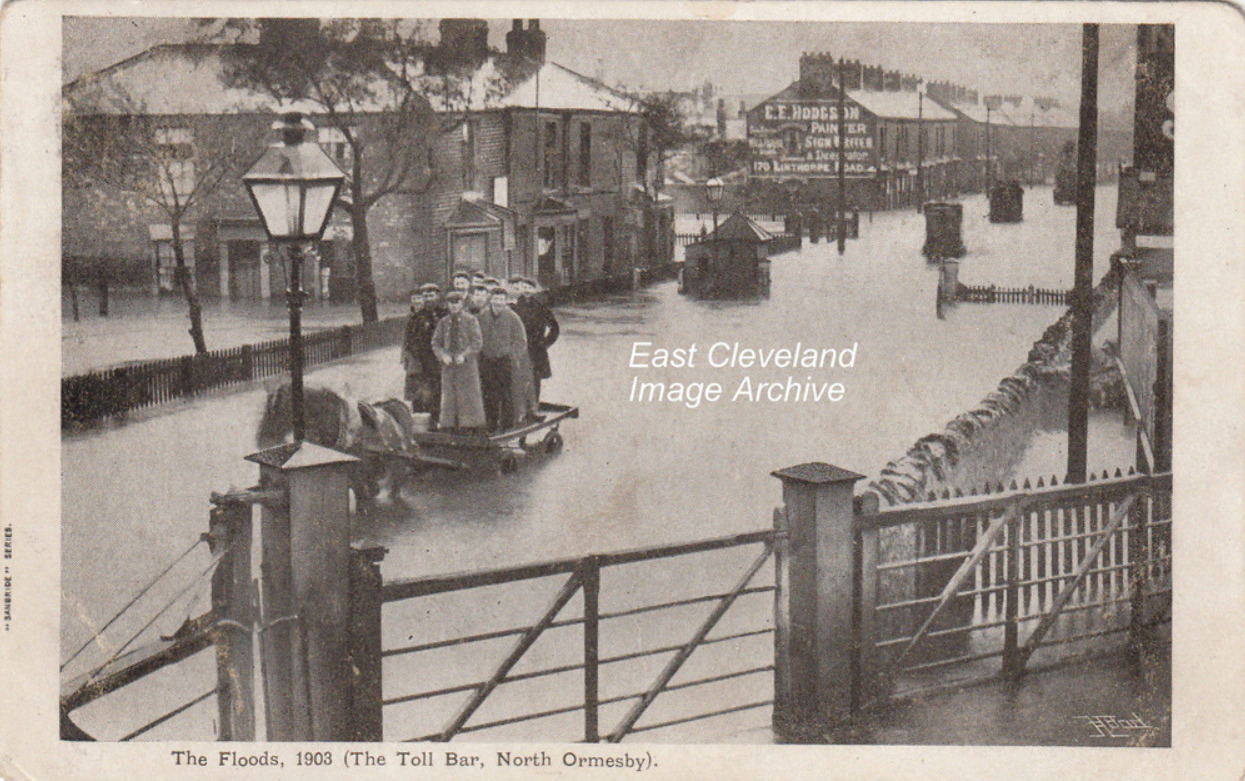
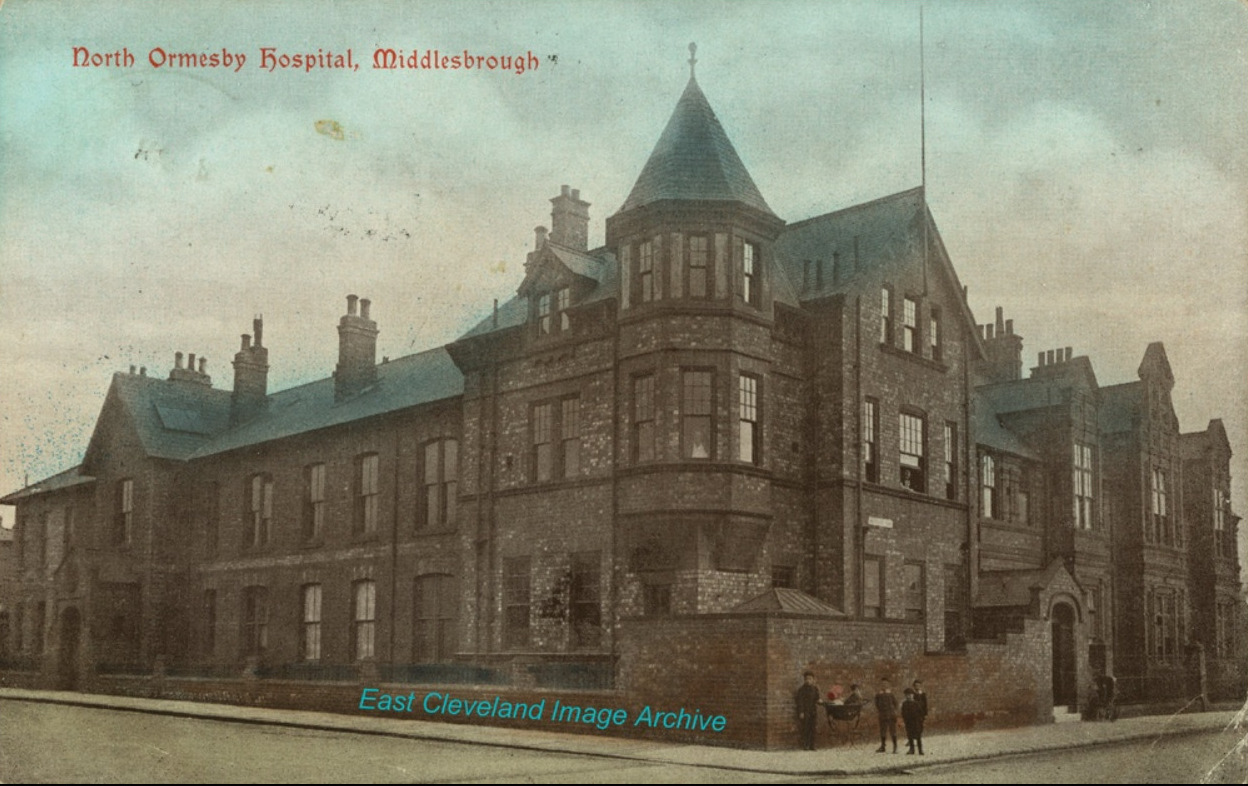
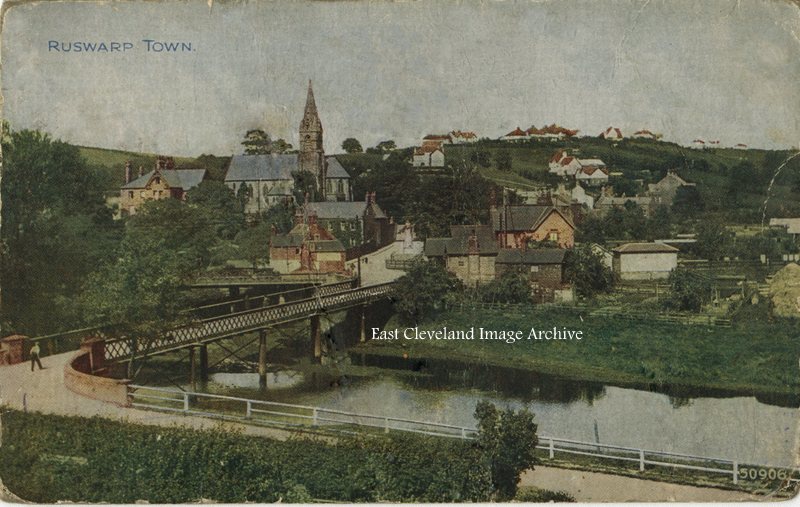
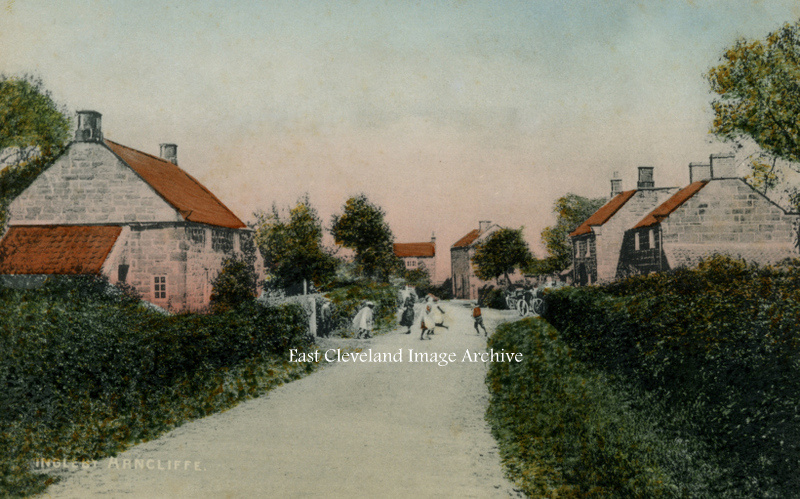
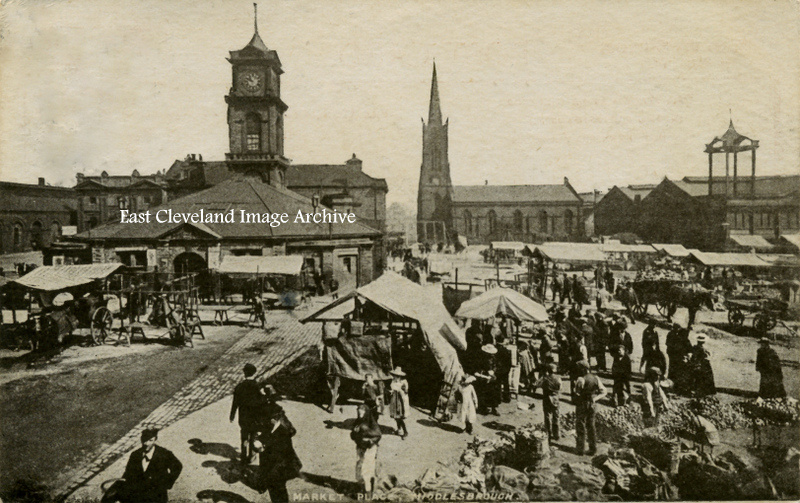
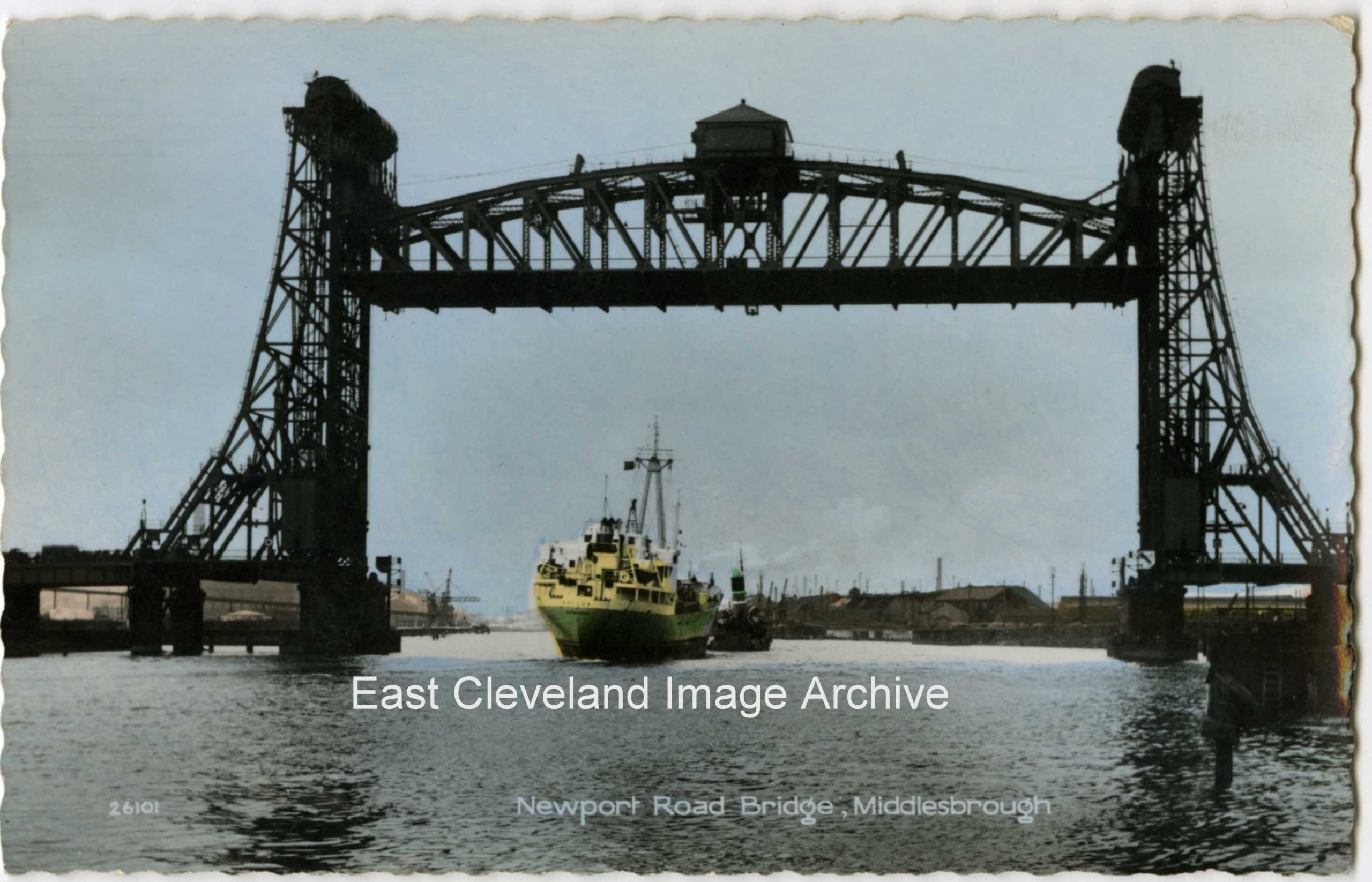
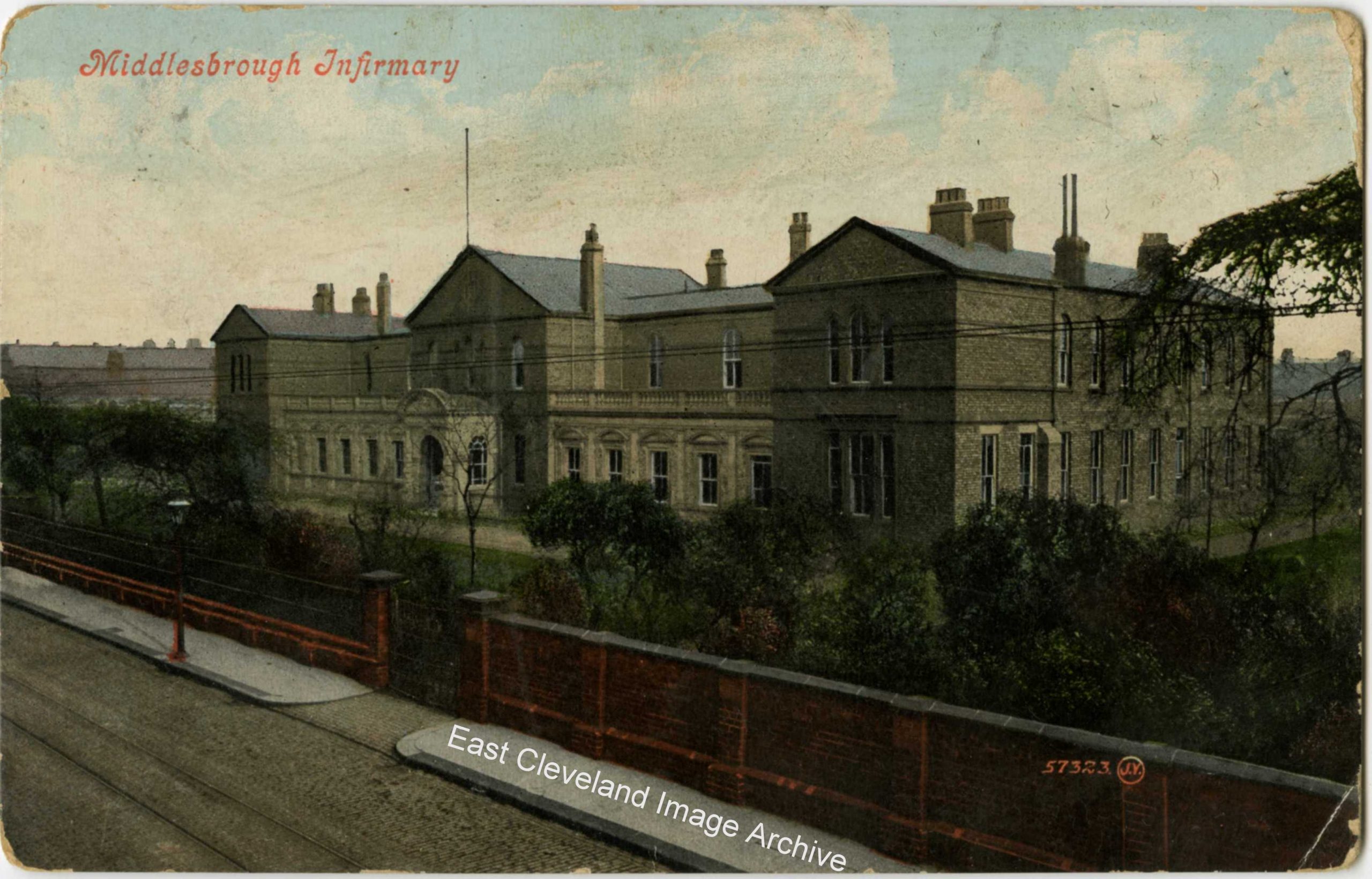
Recent Comments